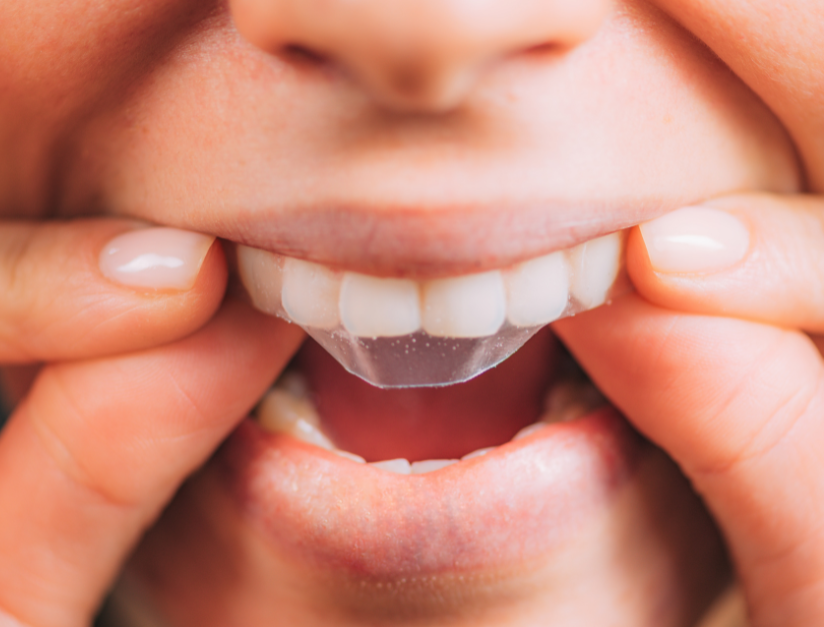The appeal of a dazzling white smile is undeniable, and for many people, teeth whitening strips seem like a quick, easy solution. These slim, gel-coated strips promise noticeable whitening without the need for a dental appointment. But in 2025, with so many options available, patients are asking the same question: are whitening strips truly safe, or could they damage your teeth over time?
Let’s break down what you need to know — based on science, dental expertise, and real-world experience.
What Exactly Are Teeth Whitening Strips?
Whitening strips are thin plastic pieces coated with a peroxide-based gel. They are applied directly to the teeth and worn for a set amount of time (usually 20–60 minutes). The peroxide works by breaking down stain molecules on the tooth’s surface, helping the enamel look brighter.
These strips are widely sold in pharmacies, supermarkets, and online — and while they may seem harmless, they do have specific limitations and potential side effects.
Why People Choose Whitening Strips
Patients often choose whitening strips because:
- They’re affordable compared to professional whitening.
- They’re convenient — you can use them at home.
- They offer visible results in a relatively short time.
- They’re easy to find — no special prescriptions or appointments needed.
However, whitening strips are not a one-size-fits-all solution and may not work equally well for everyone.

Potential Risks of Whitening Strips
Even though whitening strips are marketed as safe, there are some risks you should be aware of:
- Increased Tooth Sensitivity
Hydrogen peroxide can temporarily make teeth sensitive, especially if you already have worn enamel or receding gums. - Gum Irritation
If the whitening gel comes into contact with your gums, it can cause redness or a burning sensation. - Uneven Whitening
Whitening strips don’t always reach every part of the tooth, especially near the gum line or on back teeth, which can lead to patchy results. - Enamel Weakening (with Overuse)
Frequent or prolonged use can slowly erode enamel, increasing the risk of cavities and sensitivity.
Who Should Avoid Whitening Strips?
Whitening strips aren’t ideal for everyone. You should avoid them if you have:
Pregnancy or breastfeeding — best to avoid unnecessary chemical exposure
Active cavities or gum disease
Severe staining caused by trauma or certain medications
Crowns, veneers, or fillings on visible teeth (the strips won’t change their color)
How to Use Whitening Strips Safely
Dentists recommend these steps to keep your smile healthy while whitening:
- Read and follow the instructions carefully — don’t extend wear time.
- Avoid acidic foods and drinks (like citrus and soda) before and after use.
- Space out treatments — most people only need whitening once or twice a year.
- Pair with fluoride toothpaste to strengthen enamel.
- Get a dental check-up first to ensure you don’t have hidden issues.
Are Professional Whitening Treatments Better?
For patients looking for faster and more even results, in-office whitening by a dentist is still the gold standard. While whitening strips are great for mild stains or maintenance, professional whitening uses stronger, controlled formulas that work in a single visit without risking gum irritation.
The Bottom Line
Teeth whitening strips can be safe and effective for many people — but only when used as directed and in moderation. Overusing them or skipping a dental consultation can lead to sensitivity, enamel thinning, and patchy results.
If you’re considering whitening strips, your best first step is to get a professional dental opinion. That way, you can choose the safest and most effective method for your smile.
FAQs: Whitening Strips in 2025
1. Do whitening strips work on all teeth?
They work best on natural teeth with surface stains. They won’t change the color of crowns, veneers, or fillings.
2. How quickly will I see results?
Mild improvement can appear within 3–5 days, with full results in about two weeks.
3. Are there side effects?
The most common are sensitivity and gum irritation, which usually go away after stopping treatment.
4. Can I drink coffee after using whitening strips?
You can, but it’s better to wait at least 60 minutes to prevent new stains from setting in.
5. Are they safe for teenagers?
It’s best to wait until at least age 16 and only under dental guidance.
CTA
Website = https://drdeepeshgupta.com/
Contact no = +91 90268 02954

